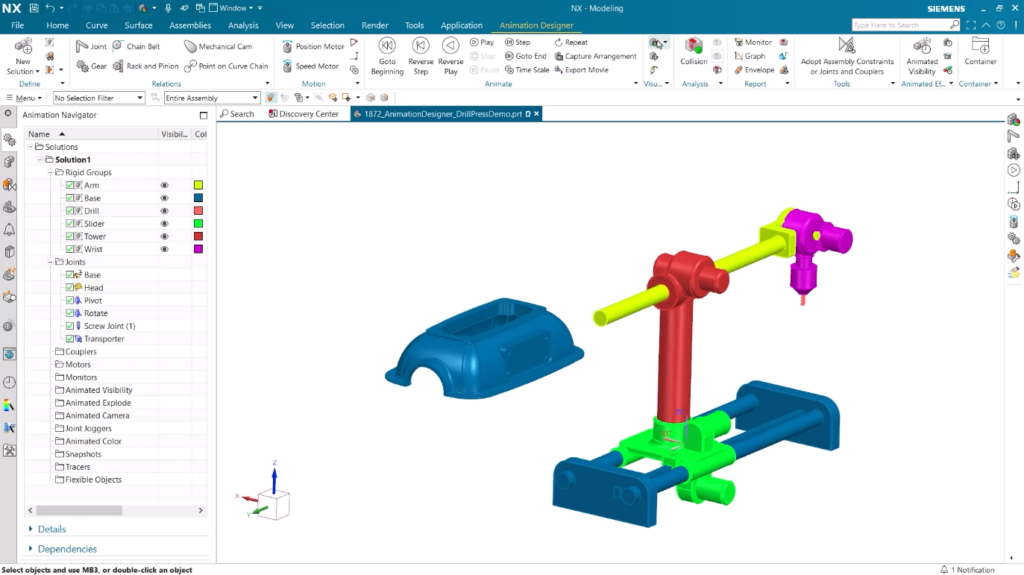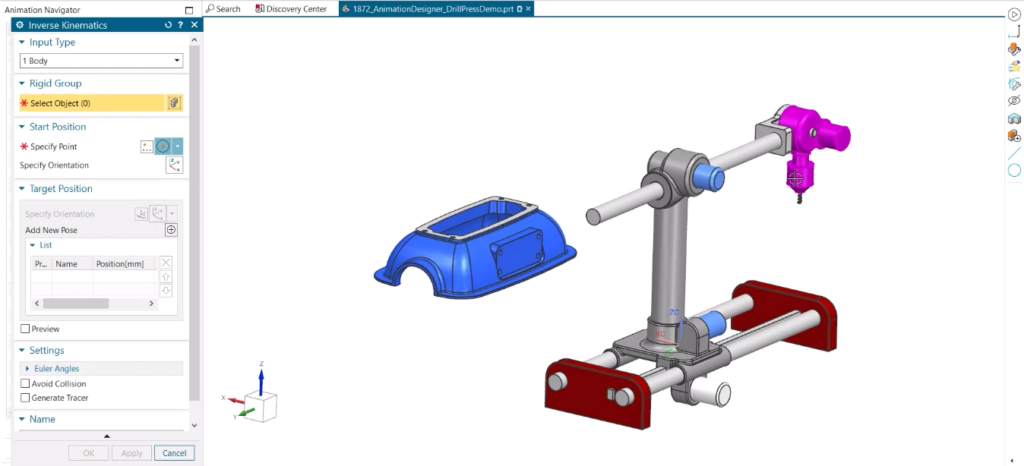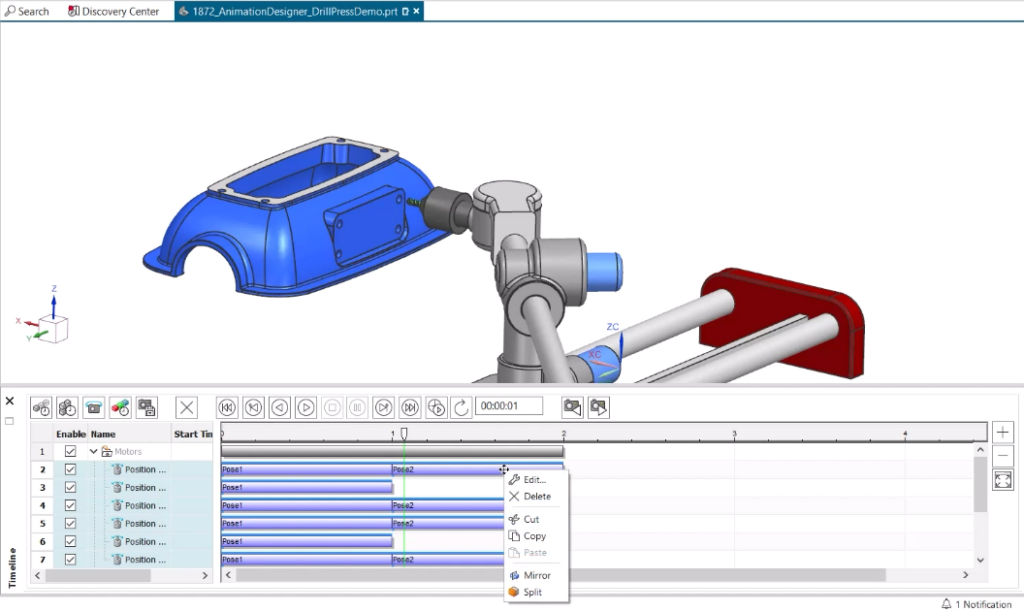Join the forum for Designers!
Your expertise is vital to the community. Join us and contribute your knowledge!
Join the Forum NowShare, learn and grow with the best professionals in the industry.
View and assign rigid groups and joints within an assembly
Inverse Kinematics will automatically create a motion path for Rigid Groups to go from a set point to a desired point—making it easy to create smooth and seamless animations. Using the Animation Navigator, you can easily view the different Rigid Groups as well as view which bodies are grouped together and which are separated, based on their assigned color. From here, you can also examine the Joints in the graphic display to determine how they are positioned in the assembly. Each of these Joints will then be used to constrain the motion of the drill press when we use the Inverse Kinematics tool.

Use Inverse Kinematics to create a motion path for two destination points
Once you’ve set your Rigid Groups and Joints, you can use the Inverse Kinematics command to create a motion path. In our video example, the rigid group is going to be the drill press spindle, and our destination will be the center point of the hole on the part we are drilling.

The coordinate systems of the starting and destination points will need to line up, and an easy way to achieve this orientation is to select an axis along with a desired face for reference. For the drill press spindle, our destination point will need to move back in order to accommodate the drill bit. This is also easily achieved by designating a second spindle destination point after the first destination point has been reached, simulating the drill bit piercing the part.
We can now view the generated motion path! The animation of the drill press provides us with a better understanding of how each Rigid Group moves within the assembly—and we can inspect this motion in more detail by opening the timeline to move through the animation.
Mirror motion to complete the animation sequence
Now that the motion path animation has been generated, one last step for us to take is to have the drill press fully return to its original position. To do this, we simply select all of the motion that has already been created in the timeline and then choose the ‘mirror’ option. Our final animation will now demonstrate the complete sequence of the drill press from beginning to end.

Join the forum for Designers!
Your expertise is vital to the community. Join us and contribute your knowledge!
Join the Forum NowShare, learn and grow with the best professionals in the industry.

